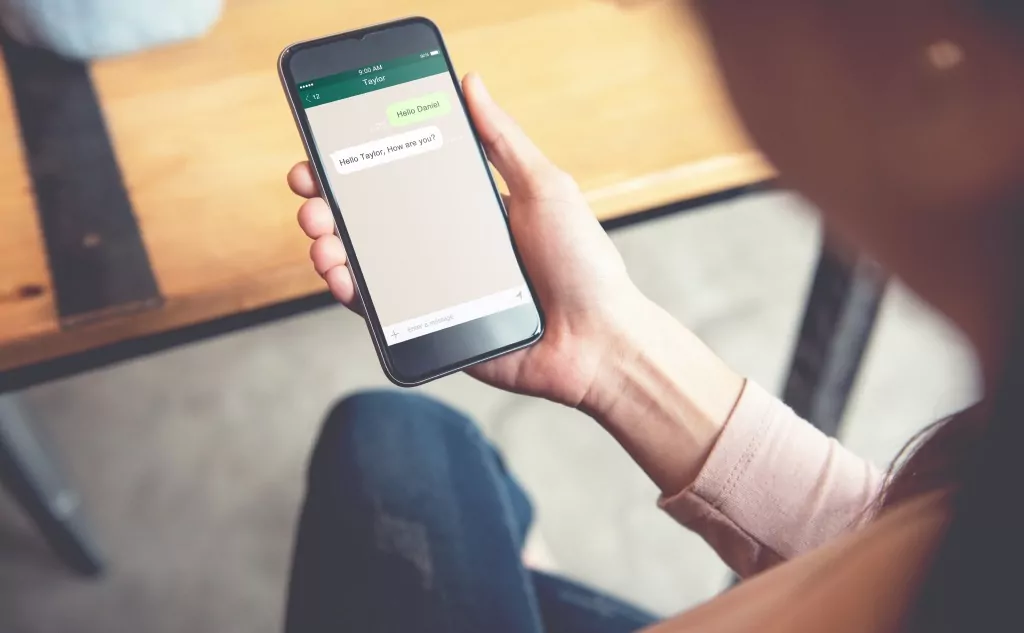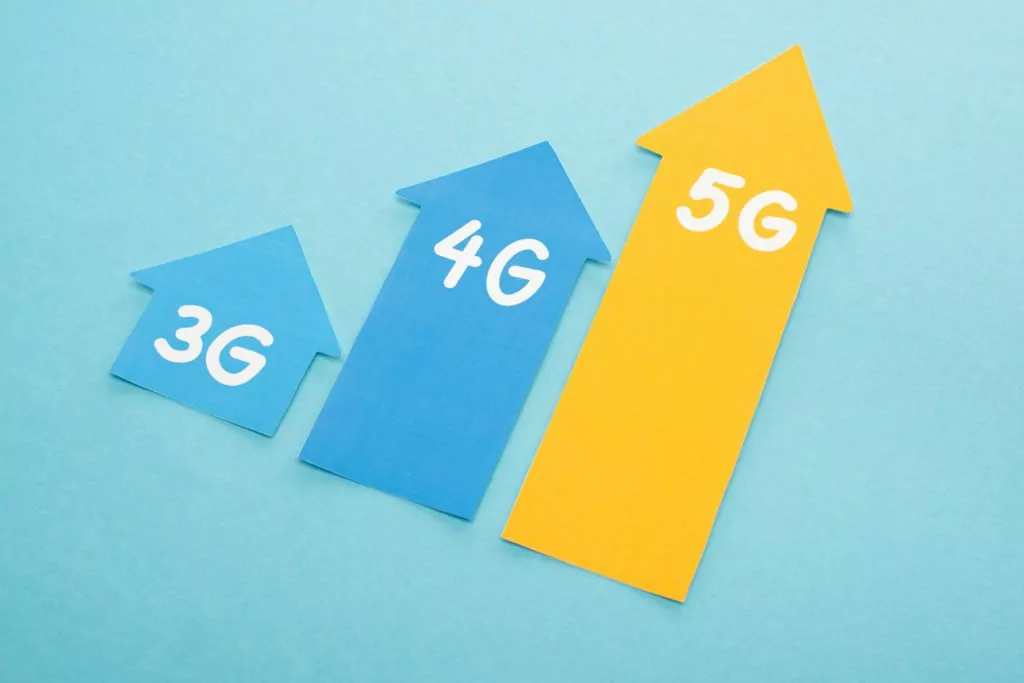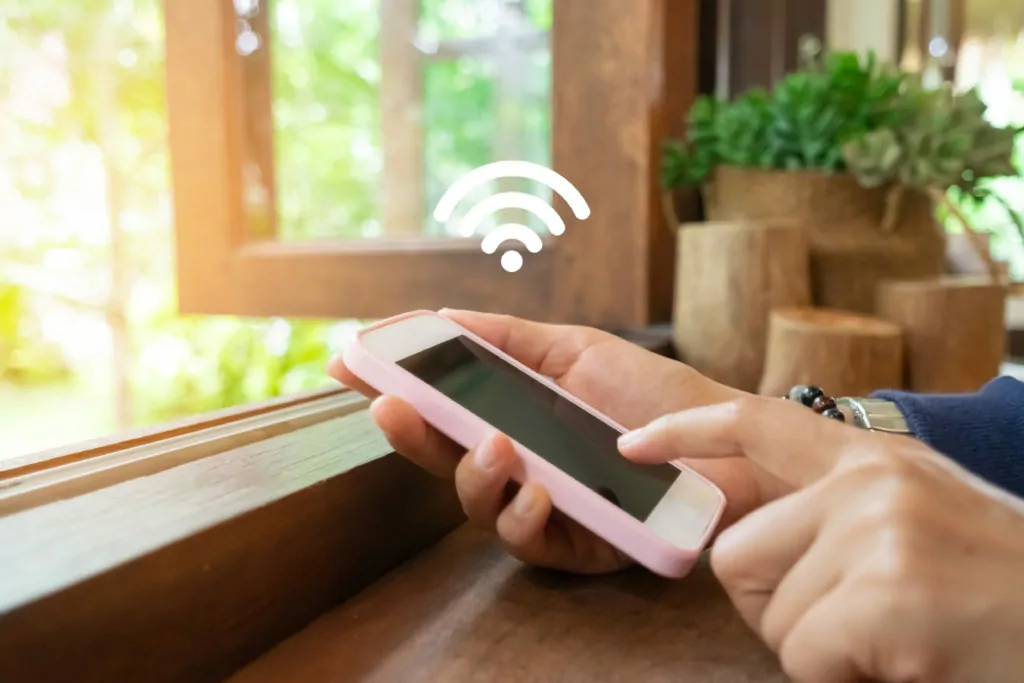Here’s how much data WhatsApp uses:
Text messaging and group messaging use very little data, unless you receive or send lots of pictures.
Voice calls over WhatsApp use about 400 KB or 0.4 MB per minute on average, regardless of the network generation.
WhatsApp’s video calls, however, consume about 5 MB per minute.
So if you want to learn all about how much data WhatsApp uses, then you’re in the right place.
Let’s dig right in!
- WhatsApp Call Unavailable: 8 crazy reasons why!
- WhatsApp for Online Dating: How Safe?
- EXIF Data on WhatsApp Photos: How to View?
- Someone Blocked You on WhatsApp: Visible?
- WhatsApp Online: Visible if Blocked Them?
- WhatsApp: Call Declined vs. Call Not Answered?
- WhatsApp Says Call Not Answered: Meaning?
- WhatsApp Says Call Declined: Meaning?

How Much Data Does WhatsApp Use?
Texting and group messaging use almost no data. The only thing that adds up is receiving or sending lots of photos.
In addition to texting and group messaging, WhatsApp allows us to video or voice call individuals and groups. There is a difference between data usage in these two instances.
WhatsApp voice calls use 400 KB or 0.4 MB per minute on average when connected to any generation of network.

Now, when it’s connected through a 2G network, it uses 200 KB per minute.
In 3G data, it uses around 300 KB per minute, and with 4G, it uses around 500 KB per minute.
WhatsApp is not very data efficient compared with other apps.
However, a video call on the WhatsApp app will consume about 5 MB a minute. Now, this can be a troublesome situation.
Not to worry, there is a very simple way to reduce data consumption on WhatsApp.
Go to your WhatsApp app, tap on the three vertical dots, tap on Settings > Data and storage usage.
Once there, we can see the Call settings section, and we can turn on the Low data usage.
By the way, learn all about what it means when you call someone on WhatsApp, your phone rings and then says unavailable here.
How Much Data Does Snapchat Use?
Do you wonder how much data Snapchat uses in comparison?
You will consume 160 MB if you send snaps continuously for an hour. Each snap consumes approximately 1 MB of traffic.
Text messages take around 20 KB (1000 KB are 1 MB) per message, but sending about 10 stories takes about 20-25 MB.
Learn all about Snapchat’s data usage here.
What About Data Usage, WhatsApp, and Other Apps?
When looking for a good Internet service provider and an economic data plan for our mobile devices, we look for the best possible solution. It’s a price/quality balance.
A decent plan should include unlimited calls (international excluded), text messaging, and some data available for surfing the Internet and using social media apps.
When we speak about data, we are talking about gigabytes (GBs).
We need those GBs in lots of situations:
- When we are commuting
- When we’re in an area that doesn’t provide Wi-Fi access
- When there are some issues with our regular Internet connection
There’s nothing simpler than turning on our Wi-Fi hotspot on an Android device when our ISP (Internet Service Provider) fails.
Think of working from home. When there’s work on the physical network or problems with our ISP, we lose track of work. So, our data plan is a good temporary solution.
Another important issue can be how much data our work or entertainment consumes. To understand that, we need an explanation of what data consumption is.
What is Data Consumption?
All the things we do on the Internet consume data.
With our providers, whether they are an ISP or an MNO (Mobile Network Operator), we usually get a limited data plan.
If we cross the specified data limit, the bills come down hard on us like a hammer. This is why we need to be careful.
We need to know the amount of data allowed per month.
More importantly, we need to know which programs and apps use the most data and which ones use the least.
Large Data Consumption
It’s fair to assume that some things we do online consume more data. Everything that has anything to do with a download will consume some data.
Usually, an enormous amount of data is consumed when we upgrade or update our systems.
The download can consume anywhere from a few measly megabytes (MBs) to a massive 4 GBs to upgrade an operating system.
Any software used can take a sizable chunk out of our data plan. We have to pay attention to what you’re downloading from the app stores.
Not only downloading but also uploading extensive files such as high-quality videos or photos results in quick data consumption.
It’s only logical that we should upload/download things when we connect to our ISP’s Wi-Fi network rather than through our MNO.
Streaming videos can be equally worrisome, especially if you’re a fan of hi-res visuals.
Imagine streaming a movie online.
Depending on the movie’s length and the quality of the video, it can consume anywhere from 1 GB to 10 GBs.
The result—pulling our hair out in disbelief when the monthly bill comes.
Low Data Usage
Believe it or not, playing games on our mobile devices online requires a lot less data than downloading them.This is because no Android or iOS game developing company wants to prevent us from playing.
They want us to keep playing games for several reasons, such as watching ads or encourage in-game purchases. That’s why data consumption is very light.
Next, we have emails, social media, and browsing.
Of course, when we try to send huge attachments such as wedding videos or photo albums, we drive the data consumption insanely upward.
However, when we send texts or simply read them and view pictures online, we’re dealing in a low consumption zone.
Surprisingly, video conferencing and phone calls using various apps can take up to 400 KBs a minute. This is nothing compared to video streaming or software downloads.
Video conferencing consumes a little more, but it’s nothing to worry about.
Let’s discuss mobile networks and their varieties to understand how they work before continuing onto how much data each app consumes.
Keep reading!
What Are the Types of Mobile Networks (EDGE, 3G, 4G, and 5G)?
Speaking about network speeds or a mobile network, we often hear the terms 3G, 4G, or 5G. These are the various network speeds supported by smartphones.

You’re probably wondering what the “G” stands for. It’s not GigaHertz (GHz), as some would believe. It’s actually “generation.”
So, the first mobile network connected to smartphones was the 3G network, i.e., the 3rd generation network.
The predecessor of the 3G network was the EDGE network. EDGE stands for Enhanced Data rates for GSM (Global System for Mobile) Evolution.
You probably remember when we had that “E” sign next to the bars on our phone.
Well, that’s the EDGE sign we could notice in the notification bar of our Android phones.
The major difference between the three generations is their latency. Latency is the reaction time between the sending and the reception of data.
For example, when you press a button on your TV remote, you almost immediately change the channel or volume. Internet connections—especially the older ones—don’t react so quickly.
5G promises significant changes in this department, so people can almost instantly control very remote devices.
So, when we click a button or touch something on our smartphone in Japan, the air conditioning at our apartment in Germany will turn on immediately.
Also, the speed between these network generations varies. The 4G network allows us to stream videos and movies.
The 3G network is good for browsing, although it is significantly slower than 4G, and 5G can be up to 10 times faster than 4G.
Imagine the possibilities!
How Much Data Do Other Apps Use Compared to WhatsApp?
The question we’re trying to answer now is how much data does each, now famous and frequently used, app consumes. This is no simple task because there are a lot of sources that vary in information.
There are also a lot of factors that affect data consumption of any app. For example, for phone calls and videoconferencing, it’s the talking time. For social media apps and text messages that go through, it’s media type and the length of the involved message.
So, let’s take a look at each app and its data consumption. Remember that your smartphone might use data for updates unless you restrict it.
Facebook Data Usage
As the largest social network, Facebook can be very useful and entertaining.
We use it to keep in touch with our friends and family or to read useful/useless information.
Plus, we sometimes surf social networks for funny videos.
Unfortunately, because of all that content and the improvements to the app that come almost daily, the Facebook app consumes more data.
The average use is approximately 1.5 MB per minute.
If we involve video content, it goes up to 2.6 MB per minute. Of course, video quality largely affects data consumption.
So, we can easily spend over 2 GB of data just using the Facebook app.
Luckily for our monthly bills, there’s a Facebook Lite app, a great data-saving solution. It uses less data because there are no fancy animations and fine details. It can consume about 50% less data than the regular app.
The other factor that goes in favor of the Facebook Lite app is that it works smoothly in areas with poor signals.
Messenger Data Usage
Messenger can consume data in a lot of ways, so it’s a little more difficult to get to an exact number.
When we send text messages, we don’t use that much data.
Photos, emojis, and animations use a little more than text messages.
Of course, voice calls and video calls use a lot more.
For example, a Facebook Messenger voice call uses approximately 350 KB per minute instead of the WhatsApp messenger, which uses 400 KB on average.
Messenger consumes around 3.20 MB a minute for video calls, while WhatsApp uses approximately 5 MB a minute.
There are quite a few differences in consumption between these two.
FaceTime Data Usage
FaceTime is a popular app on iOS. It’s very data efficient compared with WhatsApp.
This app uses approximately 3 MB of data per minute during a video call.
However, there’s a possibility to have an audio call using FaceTime, and it uses Wi-Fi or cellular data.
Of course, an audio call consumes much fewer data.
It’s about 600 KB per minute for an audio call using FaceTime, a little more than WhatsApp voice calls.
How to Save Your Data?
There are several ways we can spare our data plan when using our smartphones.
The most logical way is to connect to Wi-Fi networks as frequently as possible.

When we’re connected to Wi-Fi, our devices don’t consume data provided by our MNOs.
However, a smart data consumption option activates data consumption when there are breaks in the Wi-Fi connection.
Another good tip to limit your data use is to not stream when you’re not connected to Wi-Fi.
Instead, download a couple episodes of your favorite TV show when you’re on Wi-Fi and watch them later.
Also, you can limit data use by going to Settings > Apps and then tapping on an app that you’d like to limit.
Tap on Mobile data, and just disable background data usage.
Setting a data warning and data limit on your smartphone is also a good way to save data.
You can do this by going to Settings > Connections > Data usage > Mobile data usage > Billing cycle and data warning.
You’ll see an option to receive a notification when your device consumes a certain amount of data.
Also, there will be an option that you can tap that says “Limit mobile data usage.”
Finally, you can turn on the Data saver.
Go to Settings > Connections > Data usage > Data saver. Turn it on, and it will stop apps from running any kind of background data.

